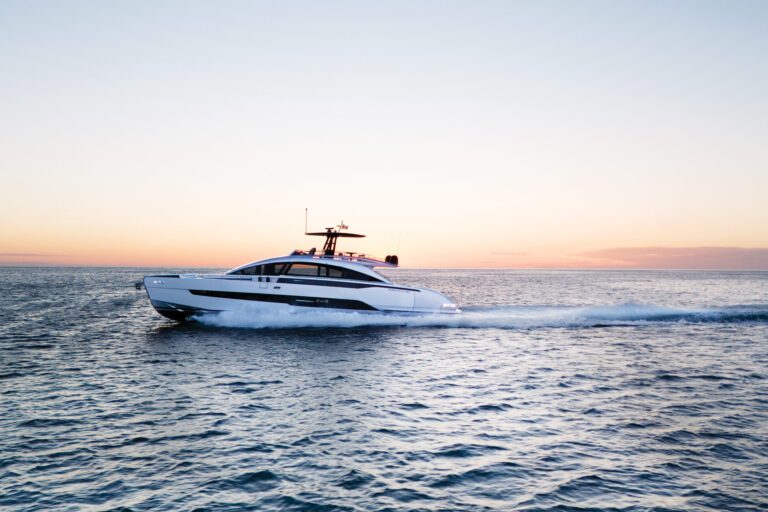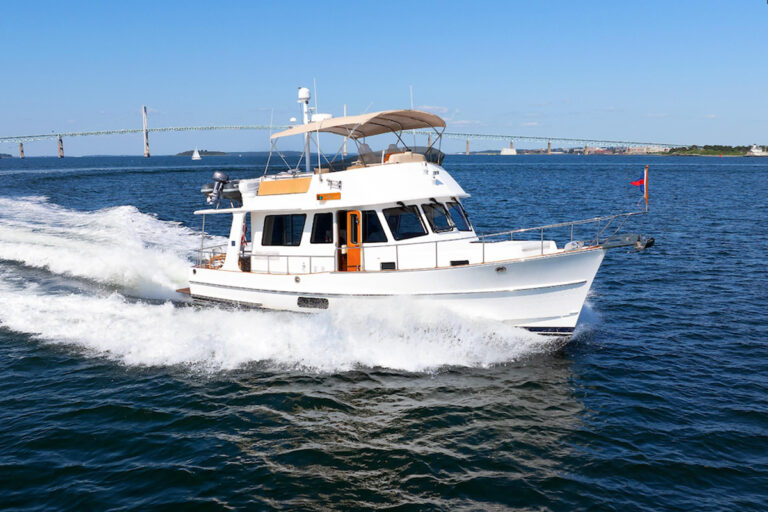When Anhinga‘s backup, handheld GPS died, I confess that I did not devote a lot of thought to its replacement until I found myself face to face with a wall of electronic technology at the marine store. Around $700 bucks later I had Garmin’s state-of-the-art GPSMAP 276C in hand.
Frankly, it was a lot more than I needed. A less sophisticated unit would have been adequate, however, I was immediately impressed by the 276C’s vivid, 3.75-inch diagonal, backlit, color TFT display. It is the same technology that once resided only in larger flush mount or bracket-mounted units. The 276C also passed the Coyle idiot test-without glancing at the instructions I was up and running, albeit in the parking lot. It is after all designed for on-highway use as well.
After taking the 276C over 400 miles through the Bahamas, I can tell you that the investment was worth it. Running side-by-side with Anhinga‘s pricey 10-inch flush-mount plotter, the 276C more than held its own. In fact, in tight spots, I found myself reaching for the 276C-frankly its logic was easier to navigate. In addition, the Garmin BlueChart(s) covering the Bahamas were incredibly detailed. For example, out of the way spots like Highbourne Cut in the Exumas were not only illustrated with multi-color contour and soundings, a desired course line led from deep water offshore into the marina. While it is wise to use your eyes in the Bahamas, I was amazed to find the suggested course spot-on.
I was also pleased to have the option to purchase charts preloaded on Garmin Data Cards. For example I purchased all of the Bahamas and Florida on a single card priced around $150. I personally find this more convenient than downloading charts from a CD. Garmin offers this option as well and it would be the best choice for those who use the 276C on-highway, or, for those who cruise in a variety of chart regions. A CD including North and South America as well as the Bahamas is priced at around $150. The 276C comes with a PC interface cable. Blank 8- to 256-megabit data cards range in price from about $40 to $180.
Electronics manufacturers have come a long way in making their products user friendly and Garmin continues to lead the pack in this regard. The 276C was easy to use and does not penalize you for keystroke errors. Waypoint data fields are easy to edit and large enough to handle intelligible location descriptions. Routes are also easy to build and edit. The 276C can store 3,000 waypoints and 50 reversible routes. These can be backed up on a PC. The CD BlueChart software includes a chart viewer and data editing capability.
If you have owned a Garmin GPS you will find the 276C quite familiar-if not, you will catch on quickly. As in the past, it is easy to cycle forward and back using the PAGE and QUIT keys. Zooming IN and OUT on the chart is obvious and a directional keypad is used for navigating around the chart and for filling alphanumeric data fields. The chart page can be displayed with or without data and configured with “north up, “track up, or “course up displays. User-definable pages include a compass page, a highway page, a navigation data page, and a route page. The NAV/MOB key places a man-overboard position on the chart and navigates to it, or, allows you to navigate to other points on the chart. Positions can also be entered on the fly in the same fashion using the ENTER/MARK key.
Garmin has taken advantage of the 276C’s high resolution to display menu icons. Pushing the MENU key twice switches from page specific menus (nav, chart, etc.) to a graphic sidebar with page tabs. I found the icons and their associated pages far easier to deal with than the conventional list style menu. Headings include “Points, “Track, “Route and a “Celestial icon that accesses tidal information, sun and moon phase and hunting/fishing predictions. Pushing the FIND key accesses a search page with icons related to chart information. This is quite helpful when you are looking for nearby tide stations, navaids, services, etc. This sort of information is also accessible from icons on the chart.
The 276C’s twelve-channel receiver performed flawlessly during our three-week cruise and with a clear view of the sky consistently acquired satellites and displayed a position in less than a minute. While an external antenna is offered, I found that in most cases the 276C had no trouble acquiring satellite data on the bridge beneath the half-tower, or, on the dash of the car. The specifications suggest that accuracy in U.S. waters is within 2-3 meters with DGPS (Differential GPS) and WAAS (Wide Area Augmentation System) activated. Based on my experience, with WAAS activated, I found position accuracy often fell near this mark even without the optional DGPS. The 276C managed to find the same lonely coral head a number of times. Amazingly, this head was indicated in its exact position on the BlueChart. In the data rich chart of Miami, with detail set at “Most, the screen re-draws while zooming were virtually instantaneous. Re-draw speed while zoomed-in and moving from chart area to chart area is almost as fast. Backlighting is crisp and bright and the 276C is viewable in sunlight.
Holding the PAGE key brings up the “Marina/Automotive option. Toggling to the automotive mode reveals a road map and additional screen pages dedicated to on-highway use. These include a trip computer page and a current route page. Those who intend to use the 276C ashore would be wise to opt for the auto navigation kit (around $300) which includes a fully unlocked “MapSource City Select North American CD, a friction mount, a dash mount, a 128 megabit data card and a 12v DC power/speaker cable.
The 276C’s waterproof plastic housing is durable and its rechargeable lithium ion battery matched the 5- to 15-hour specification claimed. A 110v AC charger is included and the data/power connector can be fitted with a 12v DC plug or wired directly to a 12v DC source. My only gripes with the 276C are that the shape of the unit is not particularly suited to the hand and without the mounting bracket it will not stand on its own. Considering its display is relatively large for a handheld, this seems an acceptable compromise.
While I use the 276C as a backup, it is a sophisticated and powerful handheld unit that could easily serve as a primary navigation system on a small boat or tender.
Contact: Garmin International, (888) 442-7646; www.garmin.com.





